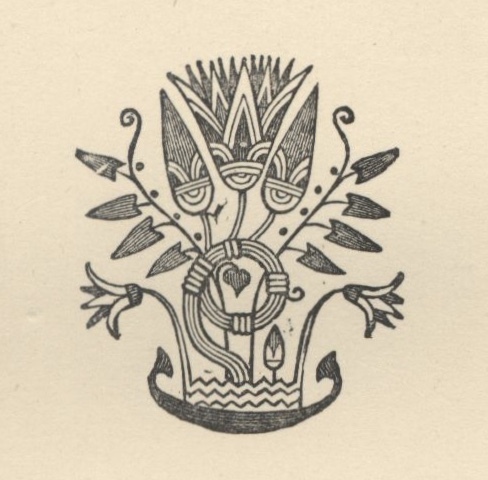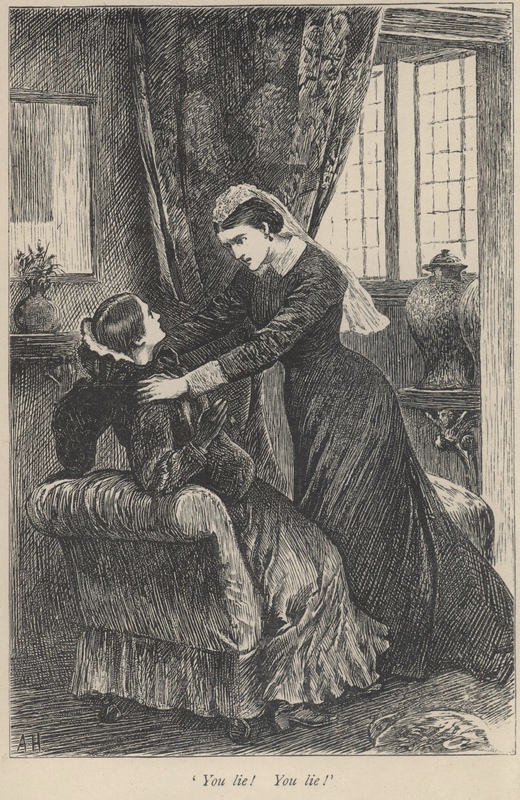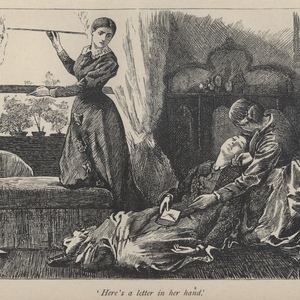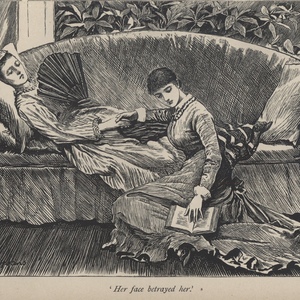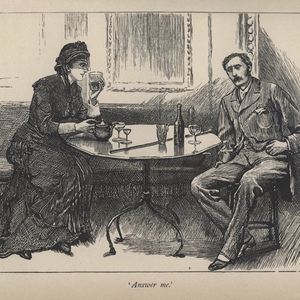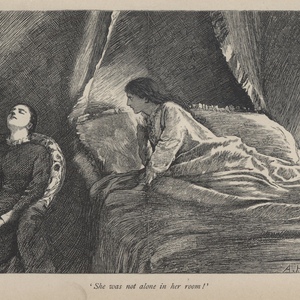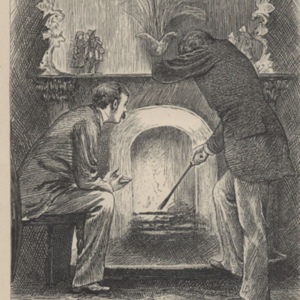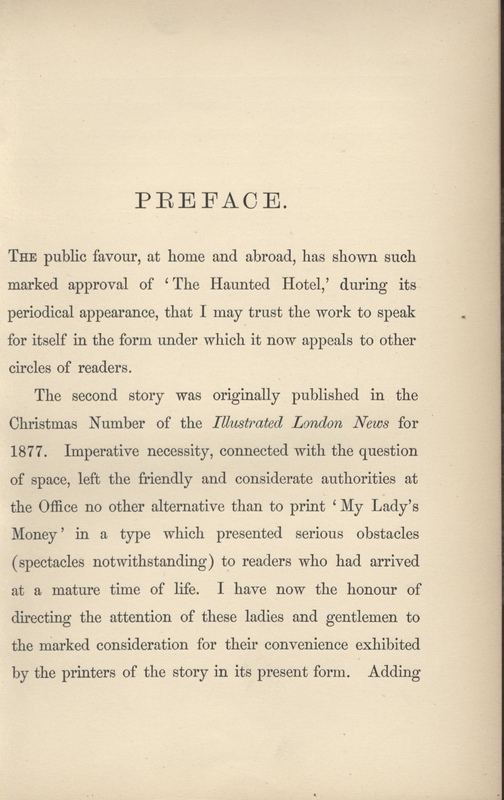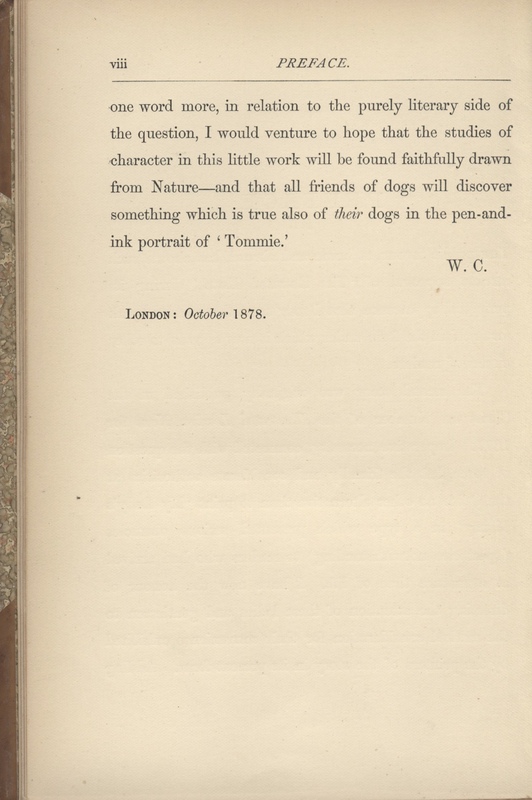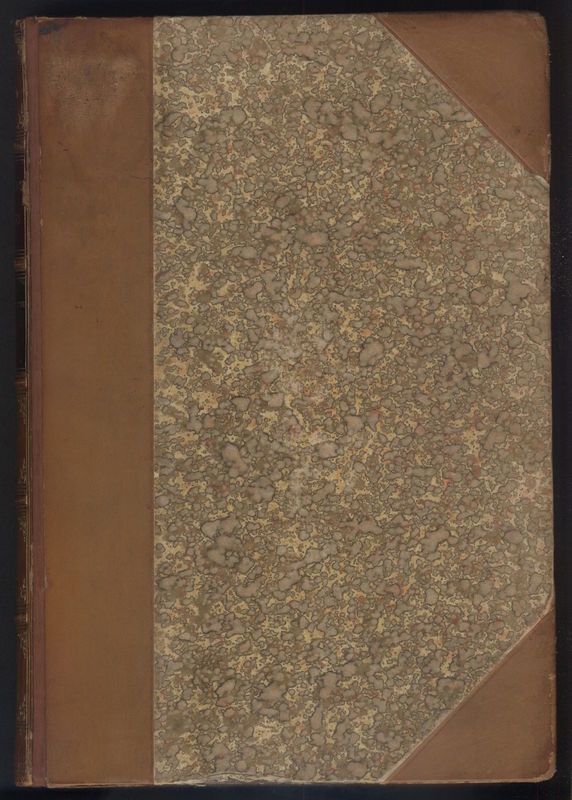Wilkie Collins - The Haunted Hotel (1878)
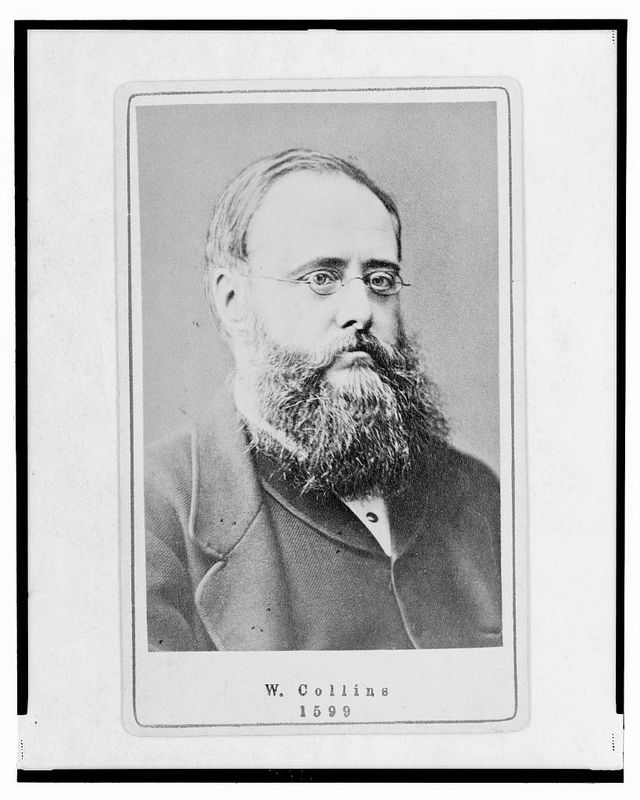
Wilkie Collins. Taken between 1880 and 1890. Held by U.S. Library of Congress Prints and Photographs Division.
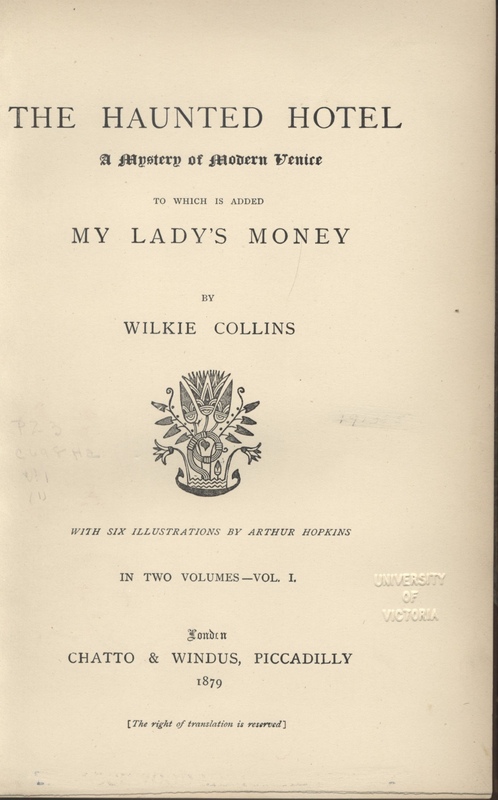
Title page of first collected edition
The Haunted Hotel, written late in Wilkie Collins’s career, is a tale of supernatural intrigue and mystery. But this is not the story of The Haunted Hotel...
...or rather this is not the story in The Haunted Hotel; this is the story of audience, authorship, and publishing in flux, of the complex and mediated path The Haunted Hotel took to make it to the iteration held by the University of Victoria. The physical characteristics and the implicated conditions of production of this iteration of The Haunted Hotel, illuminate key issues about Collins’s reception during his later career, his legacy, and how he was conceived of as an author. For both Victorian authors like Collins and Victorian readers alike, these material conditions were "potential sources of meaning, value, and power" (Hack 2).
As was typical for the period, The Haunted Hotel was first published in serial form before making it into the collected edition held by the University of Victoria. It first appeared in the monthly periodical, Belgravia: A London Magazine, between June and November 1878. The text was divided across 6 issues, and internally divided into 4 parts.
As Alberto Gabriele astutely observed in his survey of Belgravia's run, "reading the novel installments alongside every other item in the magazine made immediately apparent that the material history of serialized editions places fiction not only within the context of the single magazine issue but in the context of the whole run of the magazine" (xi). What kind of magazine was Belgravia, then? In a word: sensational. At least it had been. The magazine was founded in 1866 by Mary Elizabeth Braddon (Gabriele xxi), author of Lady Audley's Secret. She edited and managed the magazine for the next 10 years, taking on a role referred to as “conducting,” similar to Dickens’ position with respect to his periodicals, All The Year Round and Household Words. Both Braddon and Collins were branded as authors of "Sensation Fiction," immensely popular but somewhat scandalous literature that supposedly exploited the sympathetic nervous system for cheap thrills with affective language and shocking subject matter. Sensation fiction was not the province of serious authors in the minds of critics. And Collins was hounded throughout his career by accusations that he privileged plot over character.
Collins’s career had taken off in 1862 with the publication of The Woman in White. This would be the first text to be prominently branded as sensational. As Bradley Deane suggests, the charges of sensationalism marked a new development in the critical conversation (64). An explosion of cheaply printed newspapers and other periodicals had brought about an unprecedented expansion in the size of the reading public.
This newly expanded public represented new challenges and opportunities for authors. As Collins himself wrote in an essay titled The Unknown Public, “The future of English fiction may rest with this Unknown Public, which is now waiting to be taught the difference between a good book and a bad[…]. The largest audience for periodical literature, in this age of periodicals, must obey the universal law of progress, and must, sooner or later, learn to discriminate" (Qtd. in Deane 65).
What Collins could not anticipate were the cultural critics in publications like The Edinburgh Review, who had “been for years the enforcers of public taste” now claiming “the mission of shaping and regulating taste from a position they imagined to be partly outside of—and superior to—public opinion (Deane 67). Reacting to this newly expanded audience, critics imagined they needed to defend literature from the uncultured rabble. The result was a backlash against “popular” literature, in the form of charges of sensationalism (Deane 67). The popular was made a genre, sensation fiction, and by 1878 Collins had been firmly pegged into this category. We see, then, one notion of Collins as author, constructed by critics. Cain suggests that this split between the popular and literary began the fragmentation of literature into the wide field of different genres we recognize today (70).
As The Haunted Hotel made its way into a collected edition it carried along with it the genre baggage of both the critical reaction to Collins’s past work and its initial publication in the sensational Belgravia. But the critical voice is far from the only one that played a part in contesting an understanding of the role of the author in this text.
Publishing and "King Public"
In 1877, just a year before The Haunted Hotel would appear, Belgravia was purchased by Collins's publisher, Chatto & Windus. Collins had taken up with Chatto & Windus in 1875, looking for a publisher that could help him achieve his aspiration of expanding his appeal across class lines (Peters). Collins long believed in the authority of his readership or “King Public,” as he once called them (Deane 64). His work was, in a sense, created always with the end-user in mind. Indeed, the preface to The Haunted Hotel emphasizes that Collins was courting “the public favour.” Chatto & Windus for their part agreed to issue collected versions of his earlier works in cheaper 6-shilling and 2-shilling editions (Peters).
And it was Chatto & Windus that coordinated the release of this first collected edition of The Haunted Hotel, simultaneous with the publication of the final installment in Belgravia. Collins choice of publisher might be seen as something of a double-edged sword. Chatto & Windus allowed him to fulfill his desire to extend his popular appeal across class lines. But his continued association with Belgravia reinforced his position within the category of sensation fiction and as a non-serious author. Collins was trapped in the category of popular but not literary. And his own desire to court a broader public only played into the hands of his detractors. In the first collected edition, this history is hidden behind the seemingly small detail of the publication information on the title page. But that small detail speaks in a big way about how Collins positioned himself as an author in the Victorian literary marketplace.
Indeed, Collins’s relationship to his readership demonstrates his own efforts at cultivating an authorial image. While Collins certainly responded to the critical reaction against his work, his apparent fascination with the market and the cultural potential of the newly expanded Victorian reading public represents a much more significant investment. The very inclusion of a preface, an effort by the author to speak directly to the reader outside the confines of story, is a significant act of authorial intervention, pre-empting and shaping the story. Collins speaks directly to his public in friendly, even intimate terms.
The collected edition foregrounds Collins's relationship with the reader while eliding the association between popularity and sensationalism. No mention is made of The Haunted Hotel’s serial origins, rather it is presented as a cohesive, non-referential whole. The collected edition serves as Collins exerting a degree more of authorial control over his work, hiding the contributions of genre and publisher. Yet these other factors could never be completely removed from the construction of Collins as author.
The collected edition features 6 plates with illustrations by Arthur Hopkins distributed across the 2 volumes. Hopkins's illustrations emphasize the sensational nature of The Haunted Hotel, with a focus on heightened emotional states and overcome women.
Copyright and the Proliferation of Iterations
Although the University of Victoria’s holding is from the first British collected edition, internationally a collected edition appeared in Canada a month before the British edition, indeed a month before its conclusion in Belgravia!
The first Canadian edition was published by Rose-Belford. (It is available at UVic on microfilm). The Belford half of the Rose-Belford partnership is rather notorious in the history of Canadian publishing. Like his friend Charles Dickens, Wilkie Collins was deeply involved in the legal debate surrounding copyright in the middle of the century. Within the United States it was quite common for unauthorized “pirated” editions of texts to be printed. The United States represented a massive potential readership that British authors were frustrated in their attempts to monetize. Until mid-century, no clear precedent for international copyright law existed.
Meanwhile in Canada, British authors had no such problems, as a part of the Empire, Canada was subject to the regulations of British copyright, effectively suppressing the sort of robust publishing environment that grew up in the United States out of the printing of pirated editions (MacLaren 15). Publishing in London first secured Canadian copyright. That is, until the Canadian Parliamentary Copyright Act of 1875. A vagary in interpretation of the law led publishers, the Belford Brothers, to reprint British editions of British and American works unauthorized. However, in 1876 the Brothers were hit with a court case that resulted in the reassertion of Imperial copyright over Canada (MacLaren 96). The Belford Brothers were forced to go legitimate. And in the fall of 1877 they joined with George Maclean Rose as Rose-Belford, collaborating with British publishers to produce authorized reprints. Their edition of The Haunted Hotel represents one of the Belfords' first authorized texts following their legal defeat.
Never mind Collins’s authorial identity, for much of his career even his legal authority over his texts was at risk. As Sundeep Bisla indicates, “the fact that one’s literary creation could be alienated to such an extent as to allow, and in some cases legally justify, the denial of recompense for the efforts expended in composing it was merely a signal that the author…was not at all as Unified an entity as had originally been hoped” (xiv). Bisla suggests that different iterations of a text fragment any stable idea of an author (xv). Such is the case here; between the British edition, the Canadian edition, and the Belgravia Serialization, which version is the most “authoritative”? There is no easy answer.
In Jerome McGann’s “Coda: Why digital textual scholarship matters; or, philology in a new key” he calls for a new model for the critical edition in the digital age. The clash of different versions, authorships, and modes of production at play in the three “first editions” of The Haunted Hotel need not result in a winner, nor should it. Which version is the most authoritative may not be the right question. As McGann suggests, “The complete genetic information about any cultural work is coded in the double helix of its DNA, that is, in the codependent relation of its production history and its reception history. While much more could and should be said about the structure of that codependent relation, the essential point to realize is that each strand of this double helix is produced by the collaboration of multiple agents” (281). The fact alone that an authoritative text is difficult to locate for The Haunted Hotel is worth preserving. These are precisely the sort nuances that McGann argues we can and should recover. Each of the three editions emerges from that codependent relation of readership and authorship, and numberless other –ships, besides. And together they have far more to tell than in isolation.
The Materiality of the First British Collected Edition
Unique to the British edition is its two-volume status. The multivolume Victorian novel was a sort of genre all its own. Indeed, so conventional was it that Chatto & Windus and Collins have paired a short story, “My Lady’s Money,” with The Haunted Hotel to fill out the novella into a sellable two-volume format. Interestingly, in the preface Collins frames this as an authorial choice, correcting a defect in the serialized format. The original appearance of "My Lady's Money" in the packed Christmas edition of Illustrated London News meant that its typeface was quite small. In the preface, Collins represents a relationship between serial and collected editions as akin to first and final draft. The collected edition represents an opportunity to revise the serial format. And certainly, it was not an uncommon practice to expand or make alterations to a text for the collected edition. However, the adjustment being made in this case is purely a matter of print. The physical format of the book itself represents a chance to correct the inadequacies of the newspaper. This relationship dovetails with the role of the expanded audience. It was the mass market, the expanded public, that consumed the cheap serial editions. This relationship effectively reenacts the critical reaction against popular literature as not sufficiently literary. The more “popular” format, printed on cheaper materials to be more accessible, is devalued. Yet the author participating in this publishing environment attempts to appeal to both this popular audience and the more rarefied audience of the complete collected edition.
But even the audience for a collected edition was hardly stable. Such editions might be purchased either for private use (in various forms) or as part of the collection of a circulating library. The textual imprint of this instability is marked on the book itself. The collected edition of The Haunted Hotel was not sold with a hard-bound cover. This means that the cover of this iteration was selected by a reader, not the author or even the publisher. The owner would have commissioned and purchased the cover materials and binding. The choices made are telling. The spine of the book features gilt ornamentation set in leather. "Collins Works" appears above the title and volume. The leather, however, is limited to the spine. The front and back cover are both made of much cheaper marbled paper. Similarly, only the top edge of the pages is gilt. This book was meant to look good, but only from certain angles. It appears to have been made more to sit on a shelf than to be read. Perhaps it once rested amongst other similarly bound "Collins Works." And, indeed, the near pristine condition of the pages testify to its limited history of use.
Collins was perhaps an unusual author to display one's interest in. His critical association with and his own cultivation of popularity sets him somewhat at odds with the sort of high literature that might usually be the target for conspicuous consumption. A contemporary analogy might see the collected works of Dean Koontz, for instance, where we would expect someone to want to show off an interest in Shakespeare. Yet the owner of this iteration seems to have believed that Collins's works were worth collecting as such.
Indeed, this iteration attests to an interest in Collins as an author. This implies that there is an intrinsic value to reading The Haunted Hotel in relation to the full body of Collins's works. Collins’s works are brought together to construct an idea of Collins the author, even as Collins himself acts as the unifying spirit behind the assemblage of the texts. Reading The Haunted Hotel in light of Collins’s other writings is a different experience than reading it in isolation. There is a reflexive relationship between Author and Text. But in the case of The Haunted Hotel, this is also shaped by the reader who has made the choice to make sense of The Haunted Hotel in light of the author. While we cannot know exactly what the reader that commissioned this cover thought about Collins, his implicit valuation seems to imply a reading against the grain of genre and critical reaction. It is significant to note that many periodical articles went unsigned. This edition, and this copy, attest to an evolving notion of the importance of the author alongside the work. Yet what that author represents is shaped by the author himself, the publisher, the critics, the market, the reader, the public, and innumerable other elements. By the 1870s, print culture’s embeddedness in an emerging mass market-centered professional environment lead to a particularly complex and contingent construction of how texts and authors were understood.

